Abstract
The transformation test for the detection of infection by Neisseria gonorrhoeae has been examined using pro gonococci as recipients and DNA preparations from 912 clinical isolates and from 240 direct swab specimens as donors. The reliability of the method was checked with DNA from clinical isolates; 82% of the N. meningitidis from throat swab specimens were capable of transforming the gonococcal recipients, but after identification of the meningococcus by the aminopeptidase profile, the transformation test was then 99.5% positive for the gonococcus with virtually no false-positives. The only other organism to give a positive reaction was N. lactamica, which occurred once in 912 specimens. When applied directly to swab specimens, the reliability of the test was reduced, but this may have been related to variability of the specimen itself. However, 7 of 15 specimens which were microscopically suspected to be gonococci but unculturable were positive; also, 9 out of 38 unculturable specimens that were not even suspected to be gonococci were positive. Hence the test was able to identify the presence of gonococci that were unculturable. The aminopeptidase activities were not sensitive enough to be detected in the direct swab specimens, and neither cys nor leu auxotrophs were suitable as recipients to give a differentiation between N. gonorrhoeae and N. meningitidis. Evidence was obtained which would support the proposition that the transfer of genetic material between N. gonorrhoeae and N. meningitidis may occur.
Full text
PDF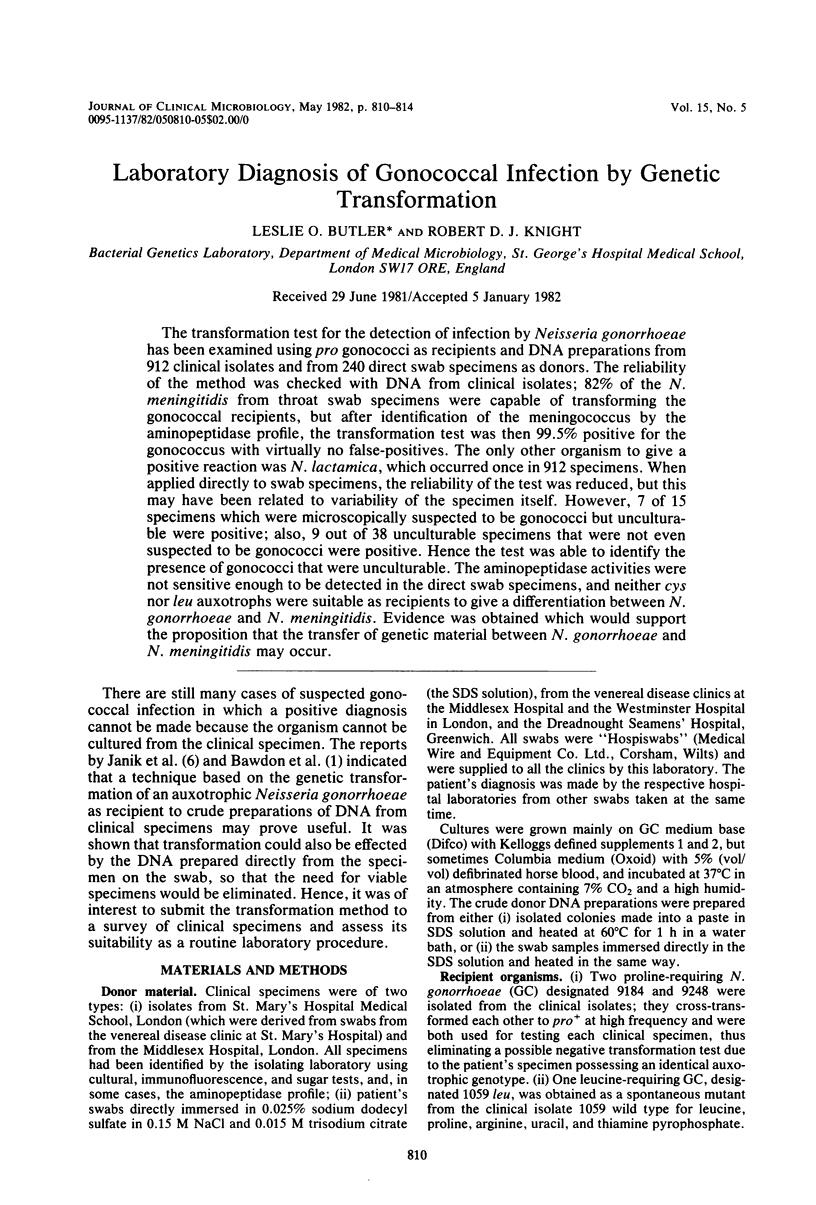
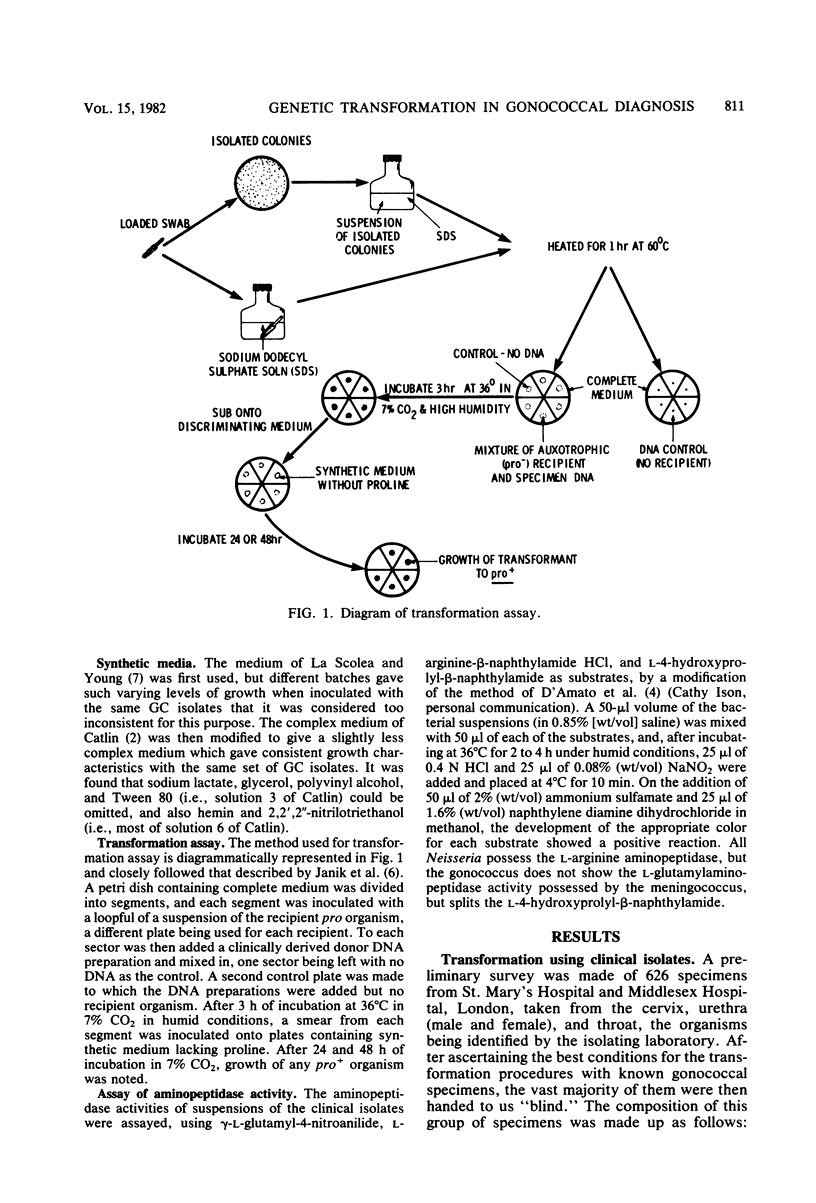
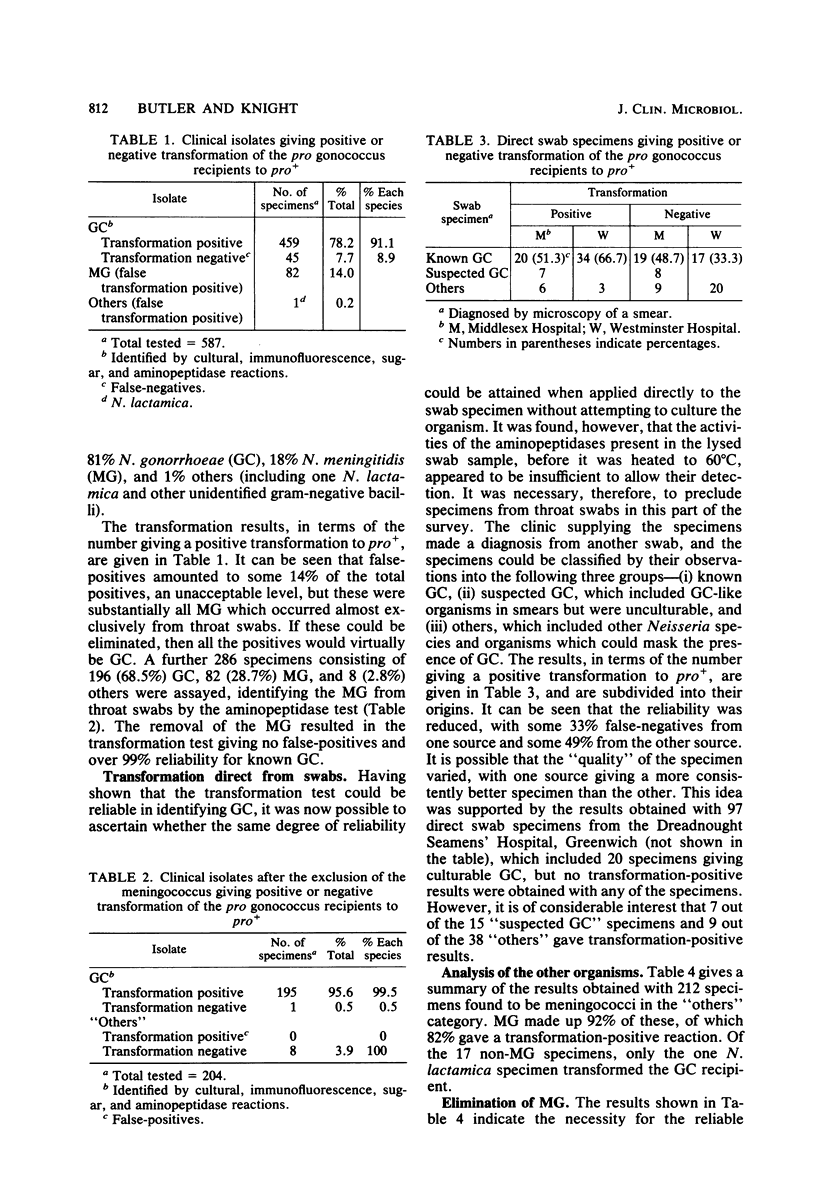
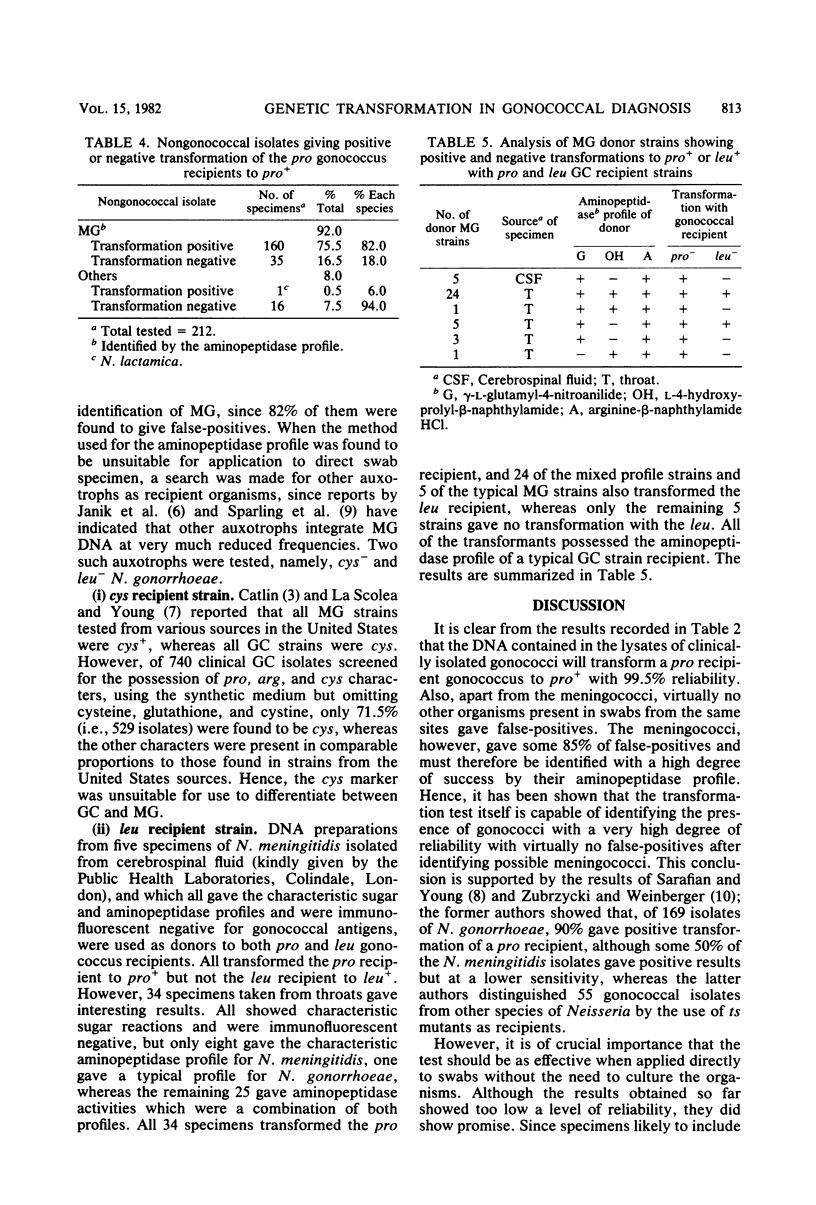
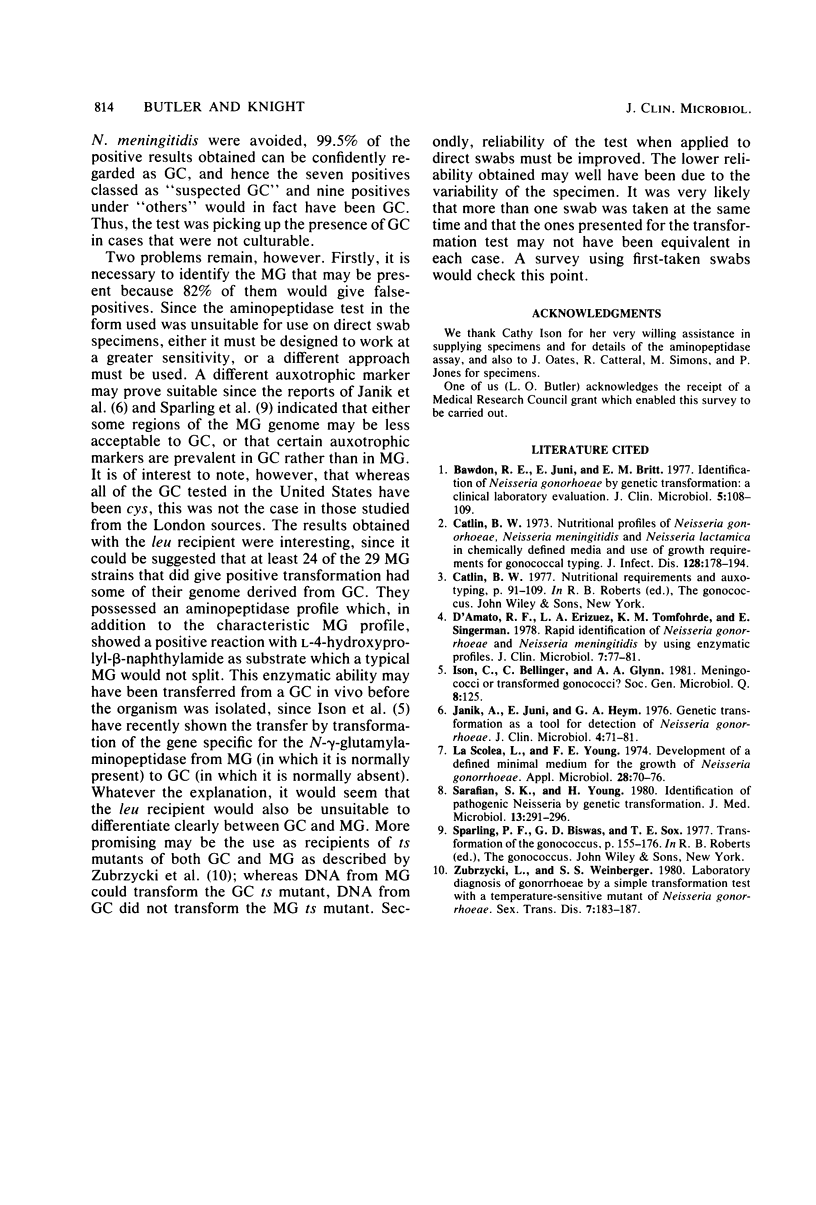
Selected References
These references are in PubMed. This may not be the complete list of references from this article.
- Bawdon R. E., Juni E., Britt E. M. Identification of Neisseria gonorrhoeae by genetic transformation: a clinical laboratory evaluation. J Clin Microbiol. 1977 Jan;5(1):108–109. doi: 10.1128/jcm.5.1.108-109.1977. [DOI] [PMC free article] [PubMed] [Google Scholar]
- Catlin B. W. Nutritional profiles of Neisseria gonorrhoeae, Neisseria meningitidis, and Neisseria lactamica in chemically defined media and the use of growth requirements for gonococcal typing. J Infect Dis. 1973 Aug;128(2):178–194. doi: 10.1093/infdis/128.2.178. [DOI] [PubMed] [Google Scholar]
- D'Amato R. F., Eriquez L. A., Tomfohrde K. M., Singerman E. Rapid identification of Neisseria gonorrhoeae and Neisseria meningitidis by using enzymatic profiles. J Clin Microbiol. 1978 Jan;7(1):77–81. doi: 10.1128/jcm.7.1.77-81.1978. [DOI] [PMC free article] [PubMed] [Google Scholar]
- Janik A., Juni E., Heym G. A. Genetic Transformation as a tool for detection of Neisseria gonorrhoeae. J Clin Microbiol. 1976 Jul;4(1):71–81. doi: 10.1128/jcm.4.1.71-81.1976. [DOI] [PMC free article] [PubMed] [Google Scholar]
- La Scolea L. J., Jr, Young F. E. Development of a defined minimal medium for the growth of Neisseria gonorrhoeae. Appl Microbiol. 1974 Jul;28(1):70–76. doi: 10.1128/am.28.1.70-76.1974. [DOI] [PMC free article] [PubMed] [Google Scholar]
- Sarafian S. K., Young H. Identification of pathogenic neisseriae by genetic transformation. J Med Microbiol. 1980 May;13(2):291–296. doi: 10.1099/00222615-13-2-291. [DOI] [PubMed] [Google Scholar]
- Zubrzycki L., Weinberger S. S. Laboratory diagnosis of gonorrhea by a simple transformation test with a temperature-sensitive mutant of Neisseria gonorrhoeae. Sex Transm Dis. 1980 Oct-Dec;7(4):183–187. doi: 10.1097/00007435-198010000-00008. [DOI] [PubMed] [Google Scholar]


